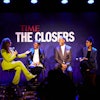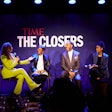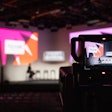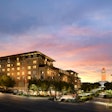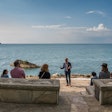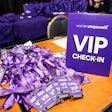Photography can be a hefty line item in event budgets. Maximize value with these five tips for savvier snapshots.
1. Educate your photographer.
Provide the photographer with a detailed timeline of key moments you want him or her to capture, in order of priority. Make a note of any VIP participants, locations or signage you need photographed. The more specific instruction the better, says event photographer Karli Myers, who has shot for Catalyst and other events.
2. Consider the big picture.
No pun intended. Think ahead to where you might use your images. Will you make large prints to hang in the office? Use them on a promo mailer? Need a variety for a website gallery and social media? Share your goals, including perspectives and angles, with your photographer in advance. If you’ll need shots for social media immediately, inquire about a quick turnaround, recommends Chris Savas, who has photographed events for companies like Lowe’s and Wyndham for 25 years.
3. Call in backup.
At minimum, recruit a trusted volunteer to serve as the photographer’s assistant. This volunteer can act as a runner who can deal with switching out full memory cards, toting extra lenses and handling other ancillary tasks. A second set of hands can free up the photographer to focus on shooting.
If significant conference events are happening simultaneously in different locations, hire a second photographer so nothing gets missed. “If you stretch your photographer too thin, the quality of the deliverable won’t be as high as any of us would like,” says Savas.
4. Plan different POVs.
Mix things up by shifting perspectives. Ask your photographer to take shots from the audience level, the side of the room, through the crowd or behind the speaker, for example. “Conference photos can get boring,” says Myers. “Spaces like ballrooms aren’t usually well-lit, so approaching it from a creative place is key.”
Savas relies on high-tech equipment to help him get those creative shots. He brings a rolling cart filled with gear like GoPros and drones to every event. Ask your photographer how he or she plans to produce work that will showcase your event and not just document it.
5. Timing is everything.
Don’t forget to have your photographer capture downtime too. “The candid stuff happens during breaks, and those are the shots people end up really happy with,” says Myers.
A better time for photographers to pause is during meals, says Savas, adding, “No one is ever happy with shots of people eating.” (If you’ve every been captured midbite, you know what he means.) Savas recommends including specific times for your photographer to break or shift gears. Doing so will only improve your finished product.



